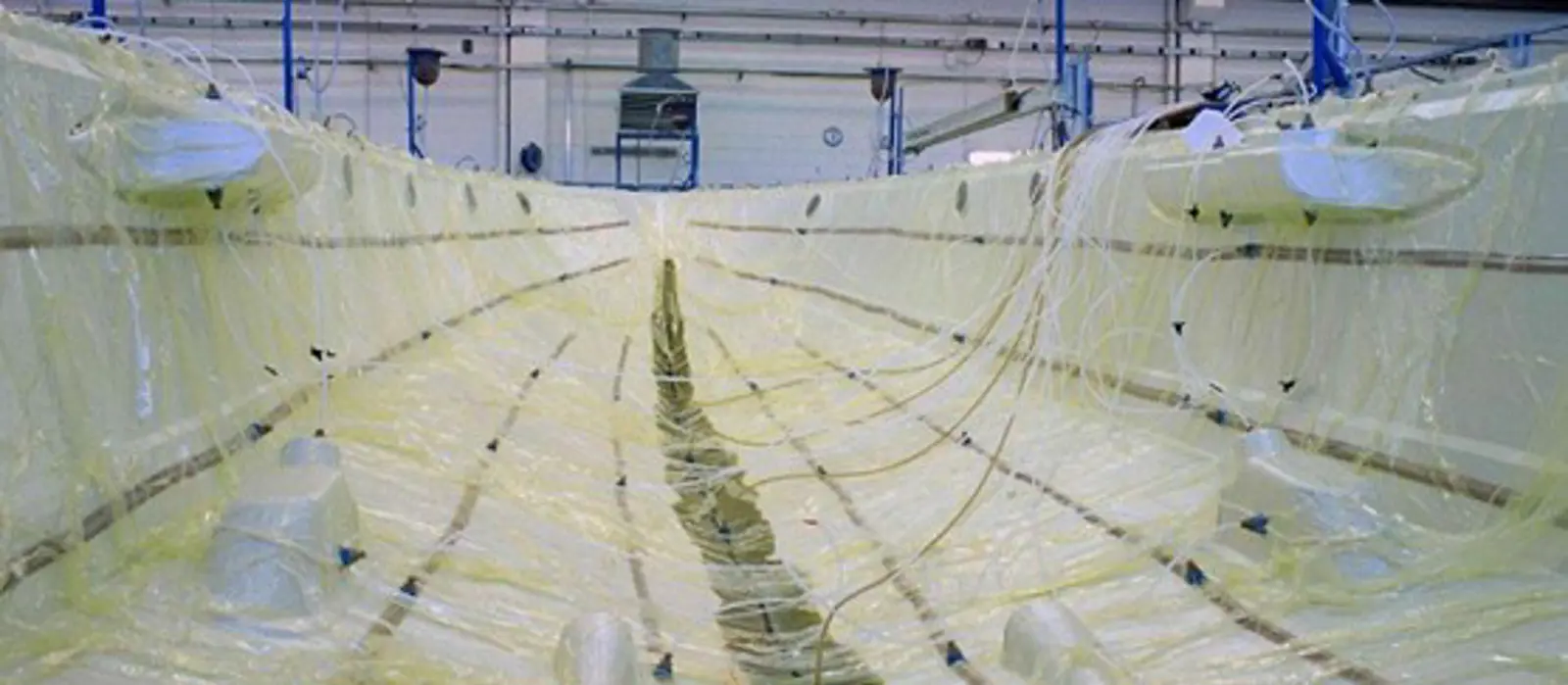Structural core materials
Light, strong and easy to shape, a sandwich core composite has many advantages for almost any application.
Learn moreWith Diab’s products and services, there is great flexibility when choosing manufacturing method to fit the requirements of the application, including usage, quality, surface finishing and production volume.
Most of Diab’s core materials are compatible with the most used resins and manufacturing methods, including wet lamination, infusion, RTM and prepreg, as well as vacuum bagging and press bonding.
Wet lamination
In the wet lamination method, resin is impregnated into the fibers by hand, using brushes or rollers. After the resin has been forced into the material and it has wetted out both fibers and core, the laminates need to cure. Wet lamination is a common method, but it is important to understand that the result to a high degree depends on the skills of the staff performing the lamination, including the mixing of resin. Also note that it is becoming increasingly difficult to limit airborne styrene from polyesters and vinylesters to today’s legal standards without investing in sufficient air extraction systems at the manufacturing site.
Infusion
Compared to open molding or wet lamination, closed molding has many advantages. Infusion offers consistent repeatable quality, a cleaner working environment and results in better-quality laminates with higher fiber content and excellent core bonding. The fibers and core are put dry into a mold under a vacuum bag and the air is removed. The vacuum created puts a pressure differential between the part and a resin bath, pushing the resin into the dry laminate and wetting it out, where grids and grooves in the core act as the flow media, creating a very good skin to core bond. The vast majority of Diab’s core materials are compatible with most common resin systems, such as polyester, vinylester, epoxy and phenolic.

RTM
RTM, resin transfer molding, is a closed mold process to manufacture composite components with short production cycles. A dry preform, consisting of fabrics and core, is inserted in the mold tool. The mold is closed completely before resin is injected into the cavity to thoroughly wet out the fibers. It is also possible to apply vacuum to the cavity of the mold to either push the resin further into the material or to improve the injection process, also known as Vacuum Assisted Resin Injection (VARTM). When the process is finished, the laminates are left to cure in the mold at an ambient or controlled temperature. To better fit with the tooling shape, the core can be thermoformed. Since tooling is rather expensive, RTM is usually recommended for larger series.
Prepreg
A prepreg is a laminate, fibers and resin, where the resin is pre-mixed and ready to react, but the reaction will not start until the prepreg is exposed to an elevated temperature. Prepregs are vacuum bagged and then subjected to an increased temperature to cure the laminates in a way that is suited to the application. There are many advantages in using prepreg, including ease of use, low void content, good fatigue resistance, control of laminate thickness, as well as good conformity and quality. Please note that tooling is normally more expensive using prepreg. Diab’s offering includes both PET and PES cores, as well as PVC high-temperature resistant core materials, covering a wide range of mechanical properties, compatible with most low and medium temperature prepreg systems. Even if most common resins and glues can be used, it is always recommended to do test compatibility prior to use. A proper bond between core and skins is crucial for the sandwich to handle loads and work as intended. The autoclave process requires special consideration and adoption to be used with Diab cores.

Vacuum bagging
As an extension of wet lamination, vacuum bagging improves the consolidation of the material. A plastic film is sealed over the laid-up laminate and the tool. Using a vacuum pump, the air is removed, and atmospheric pressure is applied onto the laminate. When the core is put down in a mold on top of wet or cured laminate it is commonly called core bedding. This method also seeks to achieve good bonding between laminate and core. Vacuum bagging of wooden, metal or prefabricated GRP skins is commonly used with different adhesives like polyurethane glue. A precise amount of adhesive is applied to the surface and scores in the core material help air to escape under the laminate to ensure proper bonding.
Light, strong and easy to shape, a sandwich core composite has many advantages for almost any application.
Learn moreGaining ground in almost every market, potential applications for these lightweight yet strong foam core materials are limitless.
Learn moreLearn more about the sandwich construction, how it works and in which application it can be beneficial.
Learn moreFind the tools and services you need to draw all the benefits from our materials.
See our tools